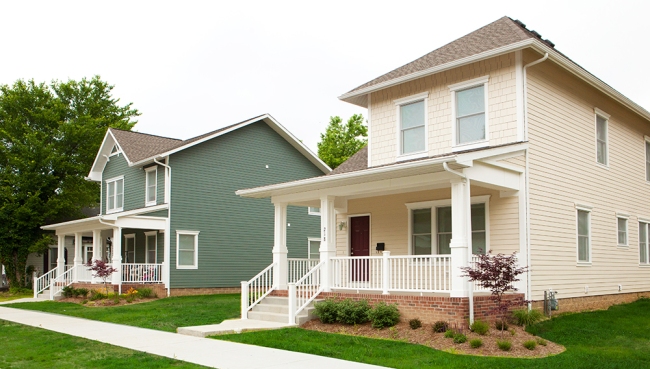2009 Evansville Landtrust
In 2009 a group of friends and neighbors living in the south-side of Evansville began meeting twice a month to discuss plans for the area where they lived. I was one of these people. There were plans to develop subsidized housing, an arts district, and a tiff district. None of those plans were ours.
The city of Evansville had hired a developer to create a space salable to “artists”, so that in return the area would increase in value and become salable to people of a higher financial means. That developer was Tom Barnet, who in a public meeting at the Wilard Library said, “I don’t house people. I develop economies.”
One aspect of this development was “low income” new home construction, which the city began with “Art Homes” and then transitioned to “Homes of Evansville”. On average, household incomes were just about $10,000 annually, in the 47713 zip code, according to the IRS figures. A quarter of the households made less than $10,000, half of the households made less than $25,000. To quote the Evansville Courier & Press, “The program accepts families based on their size and income. Some of the homes take people who are below 30 percent of the area’s median income. Other homes take families that earn up to 60 percent of that figure. For a family of three, 30 percent of the area’s median income is $16,400 a year; 60 percent is $32,820.” This places the median income in their calculations at about $50,000. 31 of these 4,263 households made an average of over $400,000 each. The stratification in the area could only be more visible by walking it; from the mansions on first to the habitat houses beside Lincoln Elementary. Considering the stratification, a median figure ,as apposed to an average or majority, is recklessly deceptive.
As the city cleared away any alternative to their plans, boarding-up and razing houses, our neighborhood group outlined a plan to construct a community that could appose the erosion that was to make way for the velocity of that “economy”. The plan was to purchase vacant houses, raze what couldn’t be repaired, salvage the materials from what was razed and warehouse them, and turn the newly vacant lots into community-gardens and parks: all owned by a landtrust, the board-members of which would be residents of the neighborhood.
The one meeting attendee who didn’t live on the south-side, had family members who did, as well as held the necessary licenses for the demolition and excavation work, and the required equipment. One resident-attendee held the necessary construction licenses. One attendee brought to the discussion an experience and trade(often extralegal) in materials from antique homes. With this last consideration there was an unresolved problem of whether to sell materials, and if so to only sell them in the area as to not “mine and export local resources “.
While trying to configure the ins and out of any formal endeavor we were going to organize, there were a couple informal “barn razings”. After someone received permission, but a permission that was of the “I’ll turn my head” type, from a contractor holding a demolition contract from the city, some folks descended on a house. I say some folks, because as any one from the meeting was in the house removing newish double pane vinyl windows, a neighbor of retirement age, whom we had never met, crawled through a window cavity and asked if they could take what they wanted. The police came, and the “permission” allowed people to keeping what they had gotten, and leaving without charges. Other ventures were smaller, more clandestine, and as well less consequential.
We as a group never did take on anything near the full scope of what had been hypothesized. I’m not sure I can think of one attendee however, who hasn’t pursued land use ventures of some similar intent though all of reduced expectation. The city seized hold of the potential of the area and made the incisions at the points to render it impotent.
